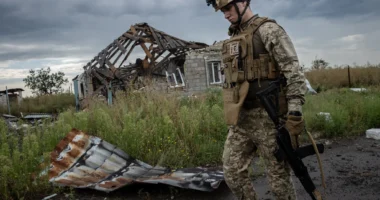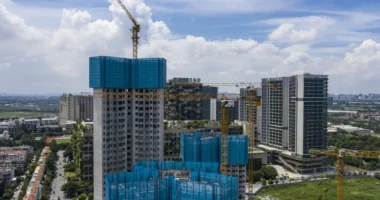A powerful earthquake struck western Japan on Monday, triggering tsunami warnings and evacuation orders, trapping people under collapsed buildings and disrupting electricity and mobile phone services in Ishikawa Prefecture, the epicenter of the quake, the Japanese authorities said.
Initial reports suggested the quake did not cause the major tsunami waves or fatalities that had initially been feared, but officials cautioned about the possibility that major aftershocks could occur over the next week, and particularly in the next few days.
The quake struck the Noto Peninsula around 4:10 p.m. and had a magnitude of 7.6 on the Japanese seismic intensity scale, the Japan Meteorological Agency said. At least six people died in Ishikawa Prefecture as a result of the quake, the police said. It was much weaker than the 8.9 magnitude earthquake that struck Japan in 2011, causing a tsunami that killed thousands and led to a nuclear crisis at the Fukushima power plant.
Officials in the city of Ishikawa said they were overwhelmed by the number of people calling for help, with one fire station there receiving more than 50 calls reporting collapsed buildings, NHK reported.

Map: Earthquake Strikes Japan
View the location of the quake’s epicenter and shake area.
The Japan Meteorological Agency initially issued a major tsunami warning and said that waves could reach as high as five meters — or 16 feet — in the parts of the Noto Peninsula facing the Japan Sea. They ordered residents to leave for higher ground immediately.
But several hours later, the government downgraded the warning and said the greatest expected wave height was three meters, about 10 feet. By Tuesday morning, all tsunami warnings had been lifted.
The biggest waves were recorded just after the quake in the port of Wajima, where they hit about four feet, the public broadcaster NHK reported. North Korea also issued a tsunami warning, as did Russia, which posted one for parts of Sakhalin Island, which is close to northern Japan’s Pacific coast. South Korea reported tsunami waves of up to 1.5 feet.

Japan’s meteorological agency said the earthquake had a very shallow depth, which tends to make quakes more dangerous. Initial reports from the authorities in Ishikawa Prefecture suggested that there had been no major damage to “important facilities,” but the fire department said it was still confirming damage to residential buildings and other structures.
The quake came as Japan is still grappling with the aftermath of the nuclear crisis at Fukushima.
Tens of thousands of people were evacuated from towns and farming villages around the plant after the 2011 quake, and some have not returned. The cleanup of the area around the Fukushima plant is still in an early phase, and last summer the government announced that it would start releasing treated radioactive wastewater into the ocean, alarming China and South Korea.
An official from Japan’s Nuclear Regulatory Agency said that after Monday’s quake, there were no signs of abnormalities at any radioactivity monitoring stations at the Shika nuclear power plant in Ishikawa, on Japan’s western coast.
The earthquake trapped people under collapsed buildings and also disrupted electricity for tens of thousands in Ishikawa Prefecture. Medical workers in the port city of Wajima were treating patients in a hospital parking lot, NHK reported.
Residents were warned that there was still a danger of landslides and building collapses from aftershocks. The government said it had already recorded 19 earthquakes centered on the Noto Peninsula.
Japan’s chief cabinet secretary, Yoshimasa Hayashi, said at a news conference that Ishikawa’s governor had asked for Japan’s Self-Defense Forces to be dispatched to the region, and that all branches of the force were standing by to help with rescue operations.
Bullet trains were halted, and part of a highway was closed in the aftermath of the quake. The Japanese airline ANA turned back four planes in midair that had been headed to airports in the affected region, and Japan Airlines canceled most of the flight service to Ishikawa and Niigata.
Because of the frequency of its earthquakes, Japan over the past century has made its buildings among the most resilient in the world. They are capable of withstanding major quakes and remaining functional even in their immediate aftermath.
Through investment, government mandates and an engineering culture finely attuned to seismic risk, Japan has managed to reduce the death toll of even devastating earthquakes.
An earthquake in the Mino and Owari provinces at the end of the 19th century, and the Great Kanto Earthquake of 1923 that killed more than 140,000 people, prompted research into sturdier buildings and the introduction of new construction standards. Over the following decades, every major earthquake in Japan prompted moves to further improve practices and regulations.







